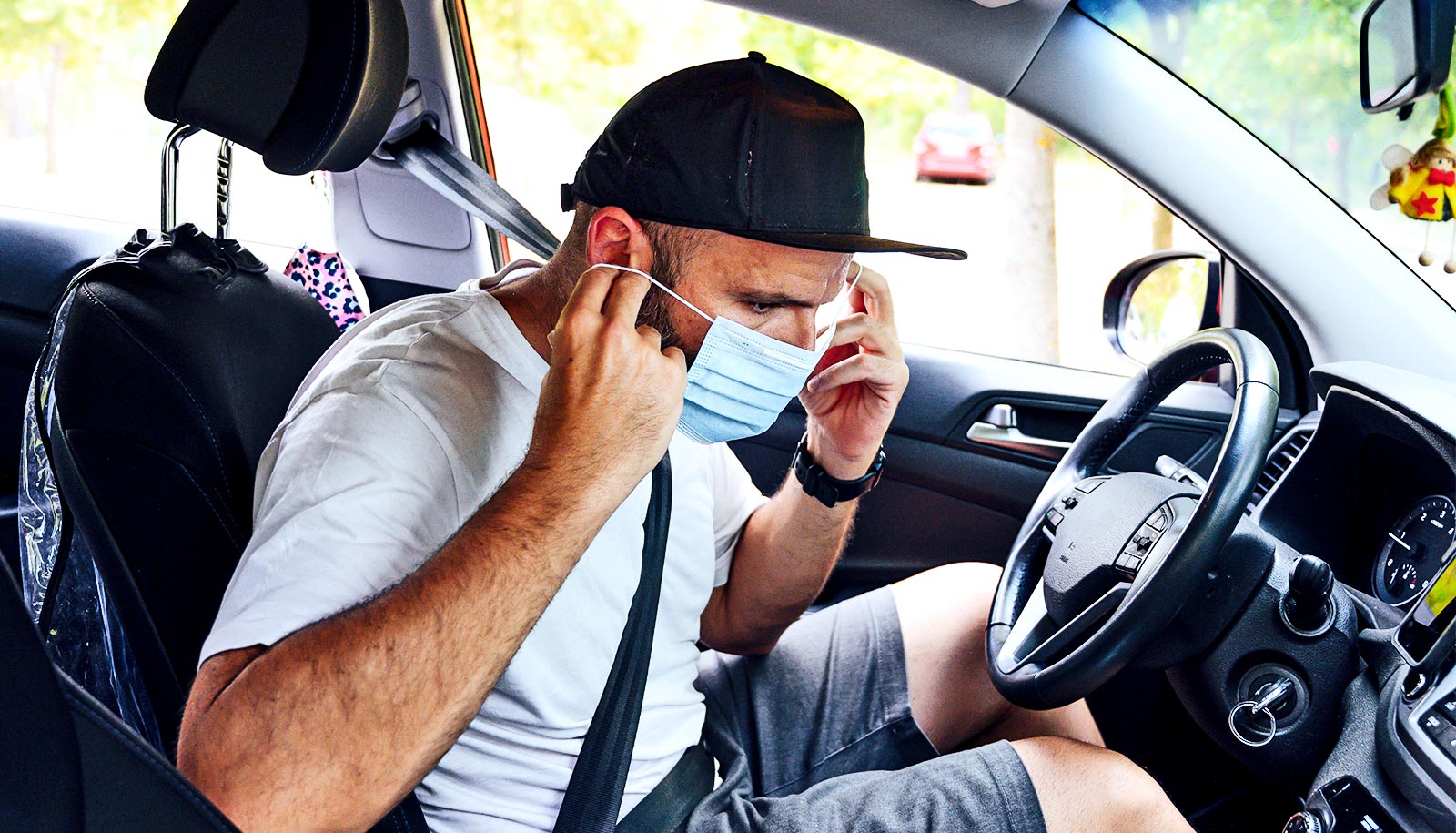The increased use of face coverings as a defense against COVID-19 creates social norms that encourage more people to mask up in public, according to a new study.
Researchers based the study on two survey-based experiments conducted in the United States and Italy, countries that have experienced severe COVID-19 outbreaks.
The study found evidence that, in both countries, when increasing numbers of people wear masks, it creates a self-reinforcing cycle that promotes the behavior in others. It does not cause people to “free ride” by not wearing face coverings while enjoying the protection afforded by those who wear masks in public places.
“Community mask-wearing may be self-reinforcing,” says Scott E. Bokemper, an associate research scientist at Yale University’s Institution for Social and Policy Studies and the Center for American Politics, and lead author of the new paper in PLOS ONE.
“People are more likely to wear masks, and encourage others to do so, when mask-wearing is ubiquitous. Importantly, we found no evidence that widespread masking reduces people’s willingness to wear masks or ask others to wear their masks properly.
“Of course, we often observe that some communities have greater mask-wearing than others, which hints at explanations based on social norms,” he adds. “But the experimental design of this research allows us to rule out the possibility that those patterns arise for other reasons, like people in different communities having different beliefs about mask efficacy or fears about COVID-19.”
To mask or not to mask?
The study also shows that, in the United States, public health campaigns that emphasize the use of face coverings to safeguard others are likely more effective than appeals highlighting how masks protect the wearer.
The researchers conducted vignette-based survey experiments conducted in the United States between October 1 and October 22, 2020, and in Italy between October 22 and November 8, 2020. At the time, the United States did not have nationwide mask mandate while Italy did. The US and Italian experiments had samples of 3,100 and 2,659 respondents, respectively.
Initially, researchers asked respondents about the frequency with which they wear COVID-19 masks and how often they see others in their communities doing the same. Next, they randomly assigned participants to read a text that explained either how masks protect the wearer or other people. A control group was presented with information not associated with masking.
The participants read three vignettes: one about withdrawing money at an ATM, another about walking in a public park, and a third about going to an indoor meeting in their neighborhood. The behavior of the people described in the vignettes was randomized so that either almost everyone or very few were wearing masks.
In each scenario, respondents were asked what they would do if they had forgotten a mask or if they encountered someone improperly wearing a face covering. They were presented four options: continue the activity as normal; continue the activity but keep their distance from others; abandon the activity; or either retrieve their own mask or ask the other person to wear theirs properly. They were also asked to read the scenarios as unaffected third parties and report their evaluation of the behavior depicted.
No evidence of ‘free riding’
The experiment found that in scenarios in which everyone, or nearly everyone, was wearing masks, the likelihood that respondents would retrieve their own mask increased by 32% among US respondents and 27% among Italian respondents. It also increased the likelihood that respondents would ask an individual to adjust their masks to fit properly by 26% and 29.4% in the US and Italian experiments, respectively.
Overall, the presence of people wearing masks made respondents more willing to retrieve masks or ask others to adjust their masks across all scenarios in the United States and in the meeting and ATM scenarios in Italy.
“We saw no evidence that seeing more people wearing masks encourages free riding,” says coauthor Gregory A. Huber, professor of political science.
“Rather, it made people more likely to follow the social norm by wearing masks or intervening when encountering somebody with a mask sliding down their nose. One policy implication of our work is that mask-wearing may persist in communities where it is widely embraced absent a government policy mandating face coverings.”
Providing information on how face coverings protect the wearer had no effect on people’s behavior concerning masks in either country. However, the message about the efficacy of masks in protecting others increased US respondents’ willingness to retrieve their face coverings in the experimental scenarios by 10.3% and their willingness to encourage others to properly wear masks by 13.6%. In the Italian experiment, the effects of the message about protecting others were not statistically significant, according to the study.
Additional coauthors are from Columbia University, Yale, and institutions in Italy and Switzerland.
Source: Yale University



